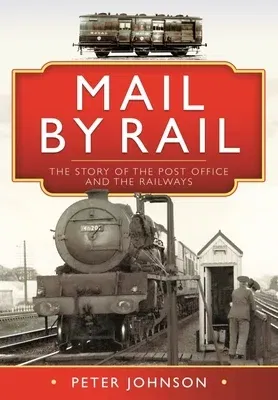Peter Johnson
(Author)Mail by Rail: The Story of the Post Office and the RailwaysHardcover, 29 November 2022

Qty
1
Turbo
Ships in 2 - 3 days
Only 3 left
Free Delivery
Cash on Delivery
15 Days
Free Returns
Secure Checkout

Print Length
296 pages
Language
English
Publisher
Pen and Sword Transport
Date Published
29 Nov 2022
ISBN-10
1526776138
ISBN-13
9781526776136
Description
Product Details
Author:
Book Format:
Hardcover
Country of Origin:
GB
Date Published:
29 November 2022
Dimensions:
25.37 x
18.06 x
2.29 cm
Genre:
British
ISBN-10:
1526776138
ISBN-13:
9781526776136
Language:
English
Pages:
296
Publisher:
Weight:
1047.8 gm